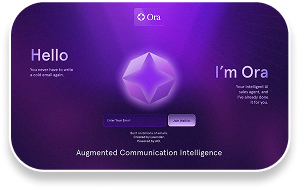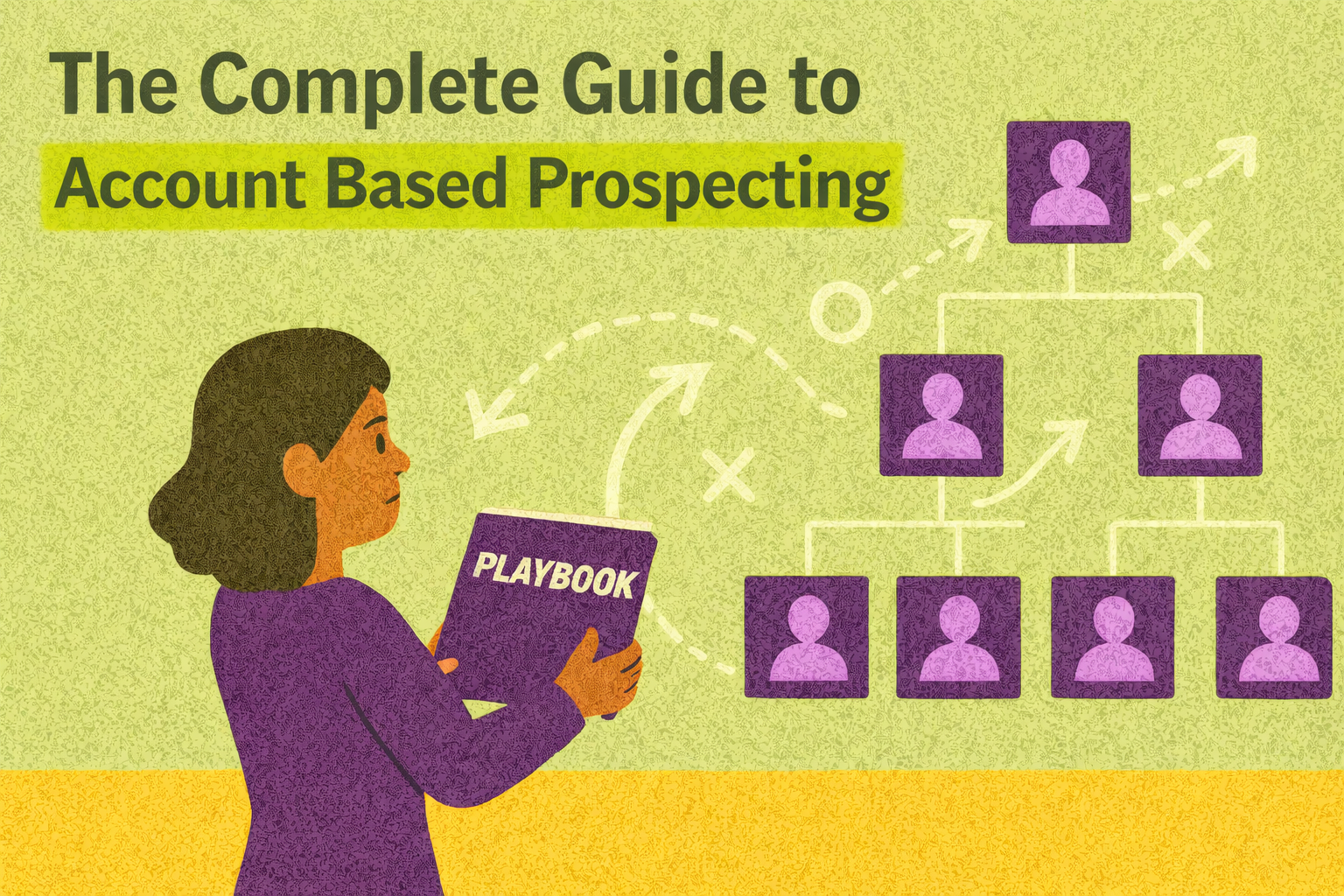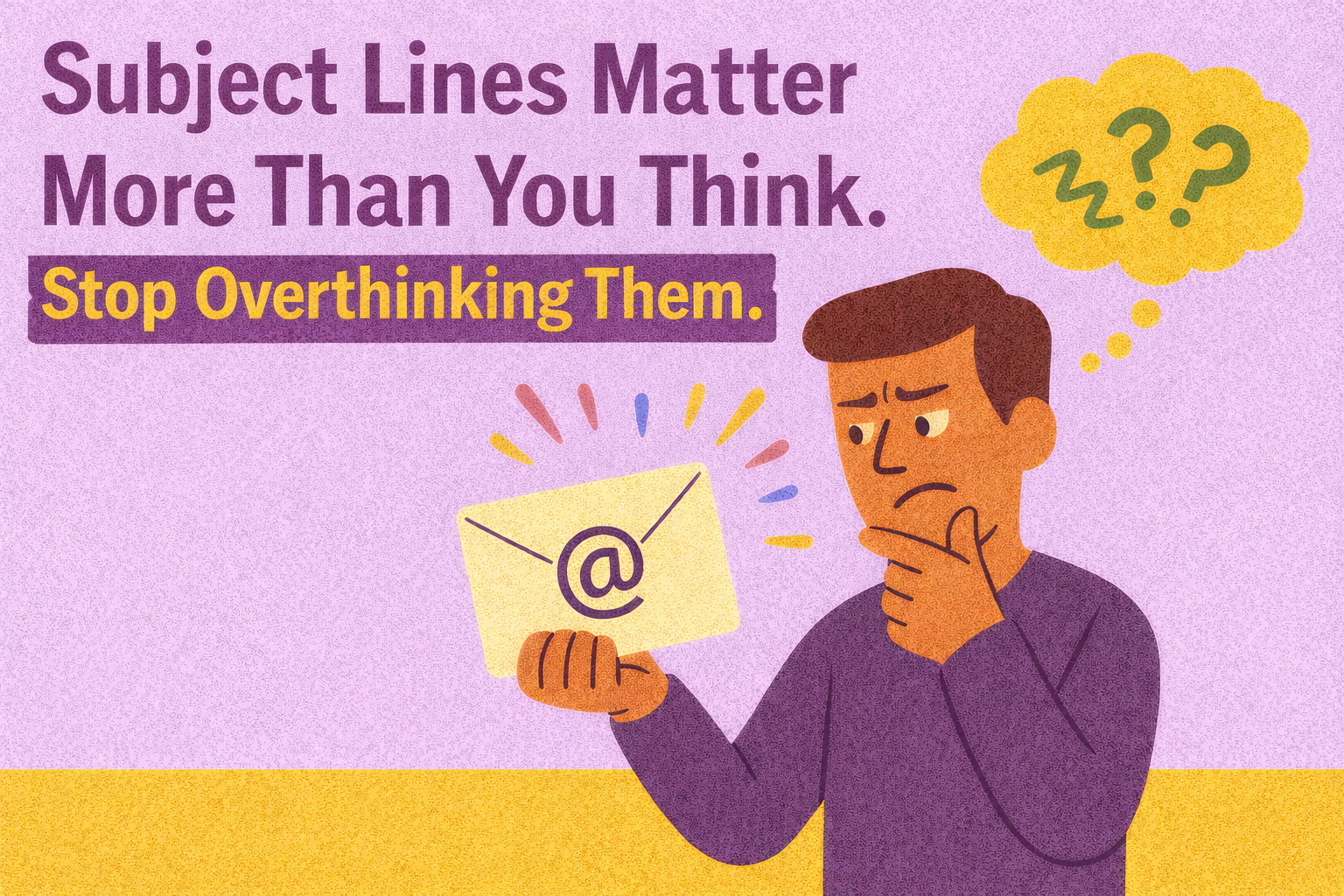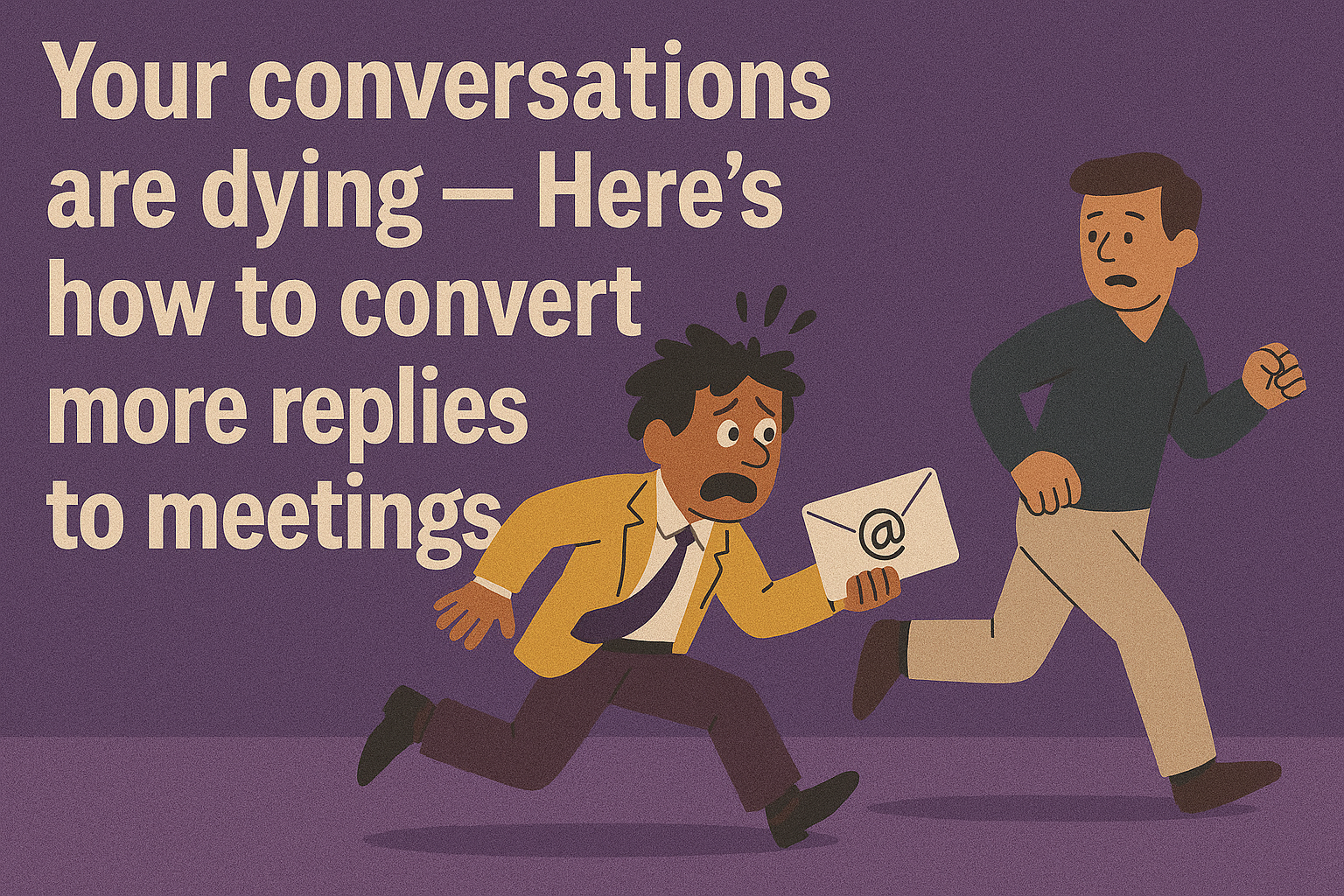How to Build a Sales Email Cadence
Your cadence should pull your prospect in, not push them away. We break down best practices and how to build a cadence that gets results.

The first time I wrote an email cadence, I didn’t know what I was doing.
I understood the task at hand: Write a series of emails to send over a period of time. (Or at least I thought I understood.)
My cadence was five emails to be sent over three weeks. Each email built upon the previous like a story. I strategically peppered in information and layered on links.
I thought I nailed it.
.gif)
Not really.
Actually, I made nearly every mistake in the book.
The cadence didn’t perform well, and I’ll never forget how I felt when I first navigated that experience.
Luckily (for you), that was many years ago. Nowadays, the Lavender crew knows quite a few things about emails.
When I first started, I had one simple question:
What is a Sales Email Cadence?
A sales email cadence is a series of emails where sellers attempt to connect with their prospects. The emails are strategically planned and sent sequentially.
They are usually part of a broader sales cadence. A sales cadence is a series of touchpoints or messages trying to contact your buyer. These include emails, phone calls, social media DMs, and comments.
Depending on where you send emails, you may hear the terms “cadence” or “sequence” – these are used interchangeably. If you use Salesloft, you’ll probably refer to it as a cadence. If you use Outreach, you’ll likely say sequence. They’re the same thing (and Lavender integrates natively into Salesloft and Outreach!)
In sales lingo, the specific usage of different buzzwords may vary by the company you work for and the industry you work in.
The important takeaway is:

While the tweet is intended to be funny, the message is valid.
Most emails buyers receive are effectively spam — meaning low quality and unwanted. So when your recipient feels pressure from thoughtless automated follow-up emails, they get frustrated.
In sales, you likely spend a lot of time thinking about your prospects. But they don’t think about you between the steps in your process.
Because you’re not top of mind to your reader, every cold email must address why you’re reaching out. Every email in your cadence should be thoughtfully tailored to account for the reader’s experience and include a logical answer to why you’re showing up.
What is the Goal of a Sales Email Cadence?
The only goal is to get a reply.
Yes, you read that right.
The only goal of a sales email cadence (or a sales email in general) is to get a reply. However, most sales emails focus on booking a meeting or providing more information with the hopes of helping the buyer make a decision.
To the reader, that approach is too much all at once and can feel like you’re trying to close the deal. This is the wrong way to think about it.
The first step to getting a meeting booked or closing a deal is to get a reply.
If you increase your chance of getting a positive reply, you increase your chance of booking a meeting and eventually closing a deal.
How to Think About Email Cadence Design
When it comes to creating a cadence, keep these points in mind:
- Most cold emails don’t get a reply. People are busy, so you must follow up – often more than once. (Hence why you need a cadence.) Once you realize most first-touch cold emails are ignored, you’ll learn that how you follow up is what matters.
- Continuously remind the reader why you’re showing up. With every email, recognize where they’re coming from. They are getting barraged with messages all day. They aren’t thinking about you between your follow-ups.
Your follow-up emails still feel like a new interruption to your reader. It’s important they know you understand their pains, based on your understanding of their situation, and that you have the ability to solve them. - It’s a sprint, not a marathon. An approach we’re seeing teams have success with is frontloading your outbound process. Instead of slowly following up, you’ll lean on your reason for reaching out to follow up more frequently in the early days of your prospecting process.
Across multiple channels, you’ll reach out 3-5 times in the first 5-7 days. At least 2-3 of those will be through email. Then as time goes on, you can relax into a more nurture-oriented follow-up schedule. - Using more channels will boost replies. Incorporating other touchpoints (like cold calling, LinkedIn and/or Twitter, and direct mail) will stretch the length of your sprint. For example, you might send a LinkedIn DM immediately after trying to reach someone on a phone.
- Your only goal is to get a reply. Have we said this yet? The goal is not to immediately book a meeting or sign a contract. The goal is to lay the foundation for those things to happen: pique curiosity, show you can solve their pain, and spark a conversation. (Learn from my failure mentioned earlier.) It’s important not to pitch your product too early and stay focused on starting a conversation with a strong CTC.
Here’s an example of an email sprint:

We’ll walk through how to build this together. But first, let’s talk about research.
The Research Behind Your Email Cadence
When we talk about research, we’re talking about personalization.
Personalization is not something you do to check a box, and it’s not adding a {first name} token to your email. Nor is it slapping on a comment about your reader’s alma mater.
Personalization is a process that generates research for you to weave throughout your entire cadence.
Why? Because personalization works. Research shows that personalized emails get twice the replies.
When you double your reply rate across every touchpoint, you see magnified success. Every touchpoint is effectively new to them. Remember, they don’t think about you between your follow-up messages.
Furthermore, research sets you up for success. It gives you the necessary information needed to craft relevant emails. That research helps create context for the reader and sets the stage for having a valid reason for reaching out.
You’re interrupting them when you reach out cold. So a core element of your outreach process is finding and creating the context for why you’re emailing them.

Ask yourself these four questions to find that observation and insight/problem:
- What do you do?
- Which problems do you solve?
- Whom do you solve those problems for?
- What indicates those problems exist for your reader?
Remember: When researching, you’re looking for external indicators that your prospect has a problem you can solve.
Next, build a process for where you find those signals. We’ve documented this thoroughly, but here’s a quick breakdown.
How to Build an Email Personalization Process
Where do you find those problem indicators? Consider what websites, sources, social media channels, etc., are the most helpful for your product, persona, and industry.
Then, organize those sources by:
- Reliability
- Relevance
- Click-path (the order you’ll click and scroll to find what you need)
Lavender makes the click-path part easier and faster. We bring many research data points into your email workflow, eliminating multiple tabs and flipping back and forth.

Whichever way you navigate your research sources, consider what information you need, where to find it, and which order will be advantageous to send them in.
For example, starting with your prospect’s company website will give you a high-level overview of their services. Then you can go deeper into their company’s social profiles, your prospect’s social profiles, news events, job boards, funding announcements, tech stack, and so on.
Remember, you must find context that will tie back to an insight or problem you’re trying to speak to and solve.
Basic personalization, like your prospect holding a specific title, is not a good reason to show up in their inbox. Focus on discovering what you do and what you can solve for them.
Now that you have a valid reason for reaching out, let's discuss the data.
Cold Email Best Practices
We analyze millions of emails monthly to uncover best practices of what makes a good sales email that gets more positive replies. Here are a few to keep in mind:
Subject lines: You want to avoid numbers (can decrease open rates by 80%), using first names (can decrease replies by 12%), and questions (can reduce open rates by 56%).
Instead, use: title case (capitalize the first letter of each word), 1-3 words, a neutral tone, and aim for descriptive > deceptive.
Simplicity: 70% of emails are written at or beyond a 10th-grade reading level. However, our latest data shows writing at a 3rd to 5th-grade level can increase your replies by 50%.
Use short, common words and short, choppy sentences. Avoid commas when you can.
This chart from the Lavender dashboard shows how an email’s reading level affects its reply rate.

Formality: Understandably, you might want to use formal words when speaking to a stranger. But you don’t have to do this in email. In fact, you shouldn’t. Use simple language and warm tones to create balance between sounding robotic and sounding overly comfortable.
Pretend you’re writing to a friend you haven’t met yet. Another way to think about it is to write how you’d speak (just remember to edit those run-on sentences after).
Brevity: The average person takes about 9 seconds to scan your email. They don’t read it word-for-word. Aim for about 25-50 words to get your point across. Using fewer words can increase your chance of response by 68%.

Personalized: Stay focused on your contextual reason for reaching out. This is why you did all of that research: to show your reader you understand their needs
The Ask: Be super clear. You’re seeking to start a conversation, not asking for their time or requesting to book a meeting. There should be one clear ask throughout the entire cadence, and it should be easy to respond to. Ask a probing question to encourage them to reply.
Check out our comprehensive cold email guide to dive deeper into these best practices.
Now, let’s build the thing!
How to Build a Sales Email Cadence
Remember our sprint from earlier?

Here are five frameworks for the emails in this example sprint and how to create them.
First email: First touch
1. Make an observation: One sentence that shows you know your reader. Use your personalization research.
2. Tie that observation to a problem or insight: One relevant sentence that implies a pain point or value prop. It should be related to your observation.
3. Build credibility: Speak to the challenge you’re solving and how you’ve helped solve this for other customers.
4. Share a solution: Explain what you did to solve this problem in one sentence.
5. Call-to-conversation (CTC): End with a question or interest-based CTA (call to action). Your primary goal is to start a conversation.
Example:
George,
Great to see you're hiring SDRs. I imagine you're thinking about how they'll ramp.
Usually, our customers focus on cold calls. But their email results lag.
We're helping reps at Sendoso ramp faster. They continue to improve each quarter with our in-inbox coach.
Am I on the right track?
Will
Why this works: The first part of the email logically explains why you’re reaching out. Making an informed conclusion from observation shows you understand the situation they may be in. This builds credibility.
The second half backs up your ability to speak to that challenge. You have helped others, and sharing this gives the reader a concrete understanding of what you’re bringing to the table.
–
Second email: Neutral Insights
1. Reference a third-party resource: Bring a trusted, third-party publication to the discussion. Share the piece you believe to be relevant to the problem and situation you think they’re in. Avoid using your company’s blog or other branded resources. Show that you’re being neutral.
2. Explain why they should read it: Reuse your context for reaching out to get them excited about the content.
3. Link to the content. (duh)
4. Optional: Make a soft ask and nod back to the original CTA or, ideally, CTC.
Example:
George, do you read Outreach’s blog?
Assuming you’re ramping those new reps, I thought you'd find it interesting.
The VP of Sales Dev at Segment wrote about how she scaled her team to a $3.2B acquisition.
They did it without using canned templates.
Check it out
Will
P.S. Any thoughts on my last note?
Why this works: Your reader knows you’re trying to sell something. Most people send their own branded content. However, your company’s content tends to be biased — at least, that’s your buyer’s perception.
By sending them a third-party resource, you’re breaking a pattern. You’re building trust on common, neutral ground. This approach creates a sense of safety. And by framing it to what you think they care about, you’ll engage your reader.
–
Third email: Thoughtful Bump
Context + Bump
This email should be one to three sentences. First, ask if your reader had thoughts on your previous message. Explain you’re curious because of the original reason you reached out. End with a simple question.
Example:
Hey George,
Given that you're growing the sales team, I thought this would be worth discussing.
Did you have any feedback on my note?
Will
Why it works: With this framework, you’re doing two things:
- You’re tapping into your reader’s sense of urgency. No one wants to miss an important email.
- You’re verifying that your message deserves urgency because you reference that context for why you reached out in this note and the original note you customized.
–
Fourth email: The Referral
1. Start with who (namedrop early)
2. Ask if they're a better person for the topic
3. Explain why they might be a better person.
4. Explain why you reached out in the first place.
Example:
Hey Will,
Would Jen be a better person to talk to about this webinar?
Realize she manages community activity. Given the event is going to be all sellers, I thought you'd want the exposure.
Will
Why it works: When you haven’t heard back, or you receive a “not interested,” a big reason why is that you have the wrong person. This framework can be a powerful tool to combat that.
The key is to be well-researched. Otherwise, your reader will assume it is a templated message, and they won’t respond. By giving a name and a reason, you’re making it easy for the reader to understand why you’re reaching out and who would be the best person to route you to.
Need some tips for detailing why someone else would be the right person to talk to?
Plug this new person’s experience, mention the roles and responsibilities from their LinkedIn description, base it off past customers and other personas you’ve worked with, or look at open job descriptions to see what responsibilities fall under particular roles.
–
Fifth email: The Breakup… or the “Bye for Now”
1. State that you've reached out
2. Explain why you did
3. Assume the timing is off
4. Ask them to correct you
5. Clarify it's the last email
Example:
Hey George,
I've reached out a few times because you’re hiring so many new reps.
I thought our email coach could help.
I'm going to chalk it up to my timing being off. Let me know if I'm wrong, but I'll stop my outreach for now.
Do you think this will be a priority in the next two quarters?
Why it works: Remember it’s not a breakup forever; it’s a “bye for now.” You’re not saying you’ll never talk to them again. But if you’ve sent a few notes and haven’t heard back, ask if you “missed the mark” and try to get them to correct you. People love to correct others.
There’s your cadence!

You’ll notice that every email hits on best practices. And every email is focused on the reason you reached out.
Lean into brevity, simplicity, and weaving in personalization. And what you end up with is a sales email cadence that is thoughtfully crafted.
This process can help you see strong response rates and quickly run cadences. Try them out, and let us know how it goes.
See what your cadences score in Lavender: Try it today for free.







